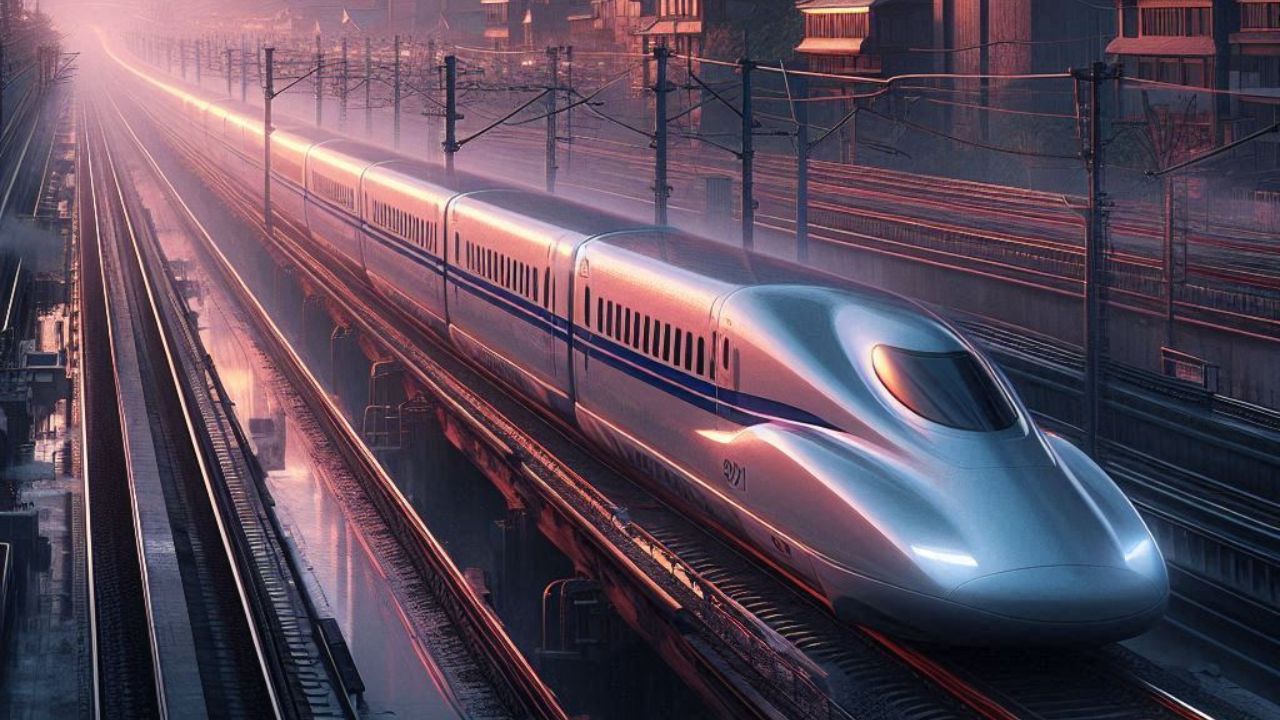The Mumbai-Ahmedabad High-Speed Rail (MAHSR) corridor has officially started with the electrification process. The National High-Speed Rail Corporation Ltd. (NHSRCL) has installed the first two steel masts on the viaduct between Surat and Bilimora stations in Gujarat. These masts, standing at 14 meters, mark the beginning of a transformative phase in India's ambitious bullet train project. As part of the electrification efforts, over 20,000 steel masts, ranging from 9.5 to 14.5 meters in height will be installed along the corridor. These masts play a critical role in supporting the Overhead Equipment (OHE) system, which includes overhead wires, earthing systems, and associated components. The OHE system is designed to deliver a 2×25 kilovolt (kV) overhead traction system tailored for high-speed rail operations. While adhering to Japanese design standards, these masts are manufactured in India, reinforcing the ‘Make in India’ initiative.
Advancements Across the High-Speed Rail Project
The Mumbai-Ahmedabad Bullet Train project has made significant progress across its various components.
Viaduct Work: A total of 253 kilometres of viaduct construction has been completed.
Girder Casting: Progress spans 290 kilometres.
Pier Construction: Achieved over 358 kilometres.
Bridges: Construction is complete for bridges over 13 rivers and five steel bridges.
Noise Barriers: Installed over approximately 112 kilometres.
Track Construction: Work has commenced at multiple locations in Gujarat.
Tunnelling Work: A Key Focus
The project also includes an extensive tunnelling phase. A 21-kilometre tunnel is being developed between Bandra Kurla Complex (BKC) and Thane in Maharashtra. Additionally, mountain tunnels are under construction in Maharashtra’s Palghar district using the advanced New Austrian Tunnelling Method (NATM). Meanwhile, a mountain tunnel in Valsad district, Gujarat, has already been completed.
Connecting Growth Hubs and Boosting the Economy
The Mumbai-Ahmedabad High-Speed Rail project is set to connect major business hubs, including Mumbai, Surat, Vadodara, and Ahmedabad—regions with robust economic growth rates. According to a feasibility study conducted by the Japan International Cooperation Agency (JICA), the project’s Economic Internal Rate of Return (EIRR) stands at 11.8 per cent, highlighting its potential for substantial economic benefits. This transformative project represents a significant step forward in India's infrastructure development, showcasing advanced engineering, sustainable practices, and economic promise.




